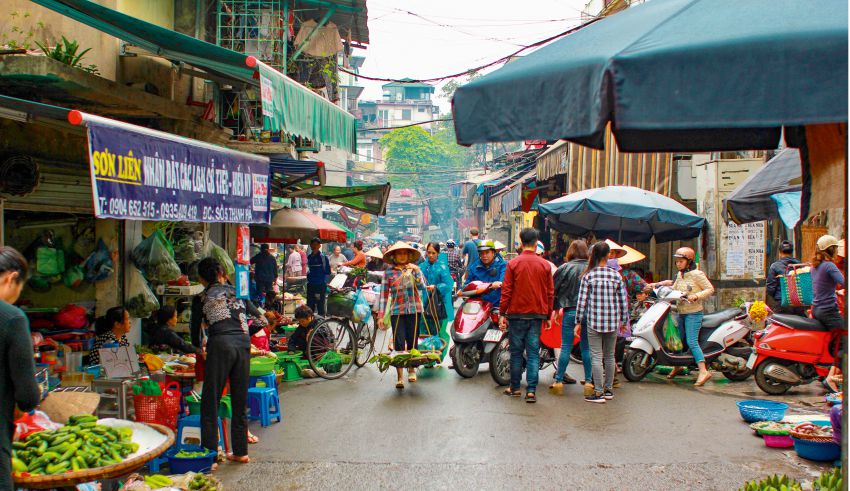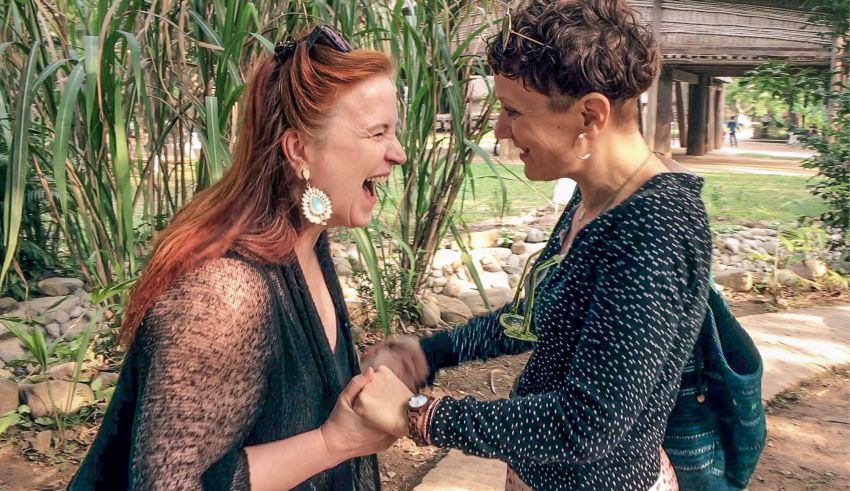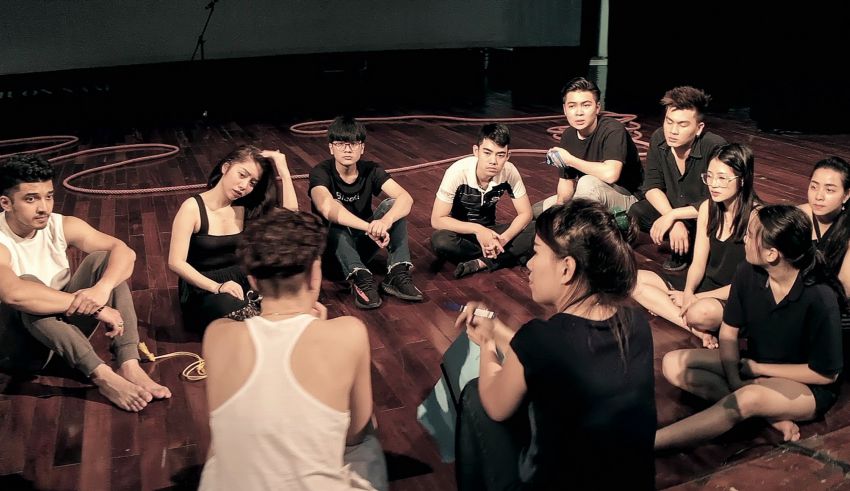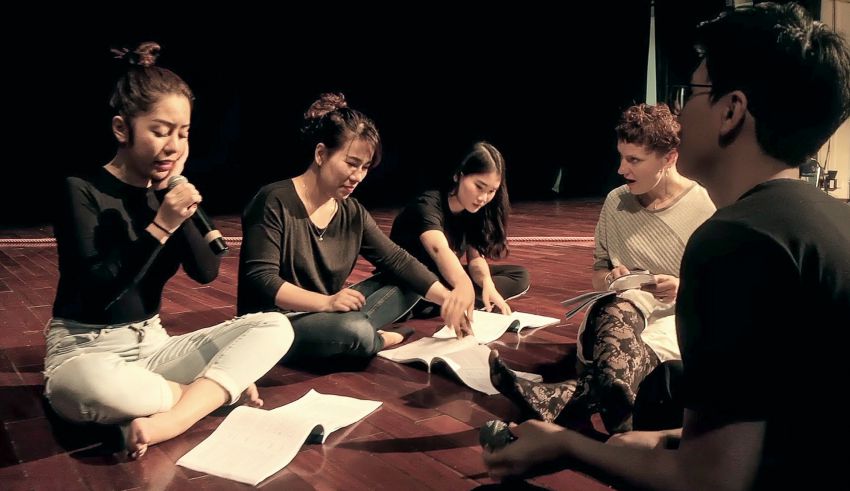In April of 2018, the mdw sent two drama professors—Beverly Blankenship and Anna Maria Krassnigg—to the Hanoi Academy of Theatre and Cinema, an ASEA-UNINET partner institution, to join students there in developing a condensed stage version of William Shakespeare’s Romeo and Juliet.
The cornerstone for this challenge of partnering with students in Vietnam to explore a core piece of European theatrical literature in rehearsals and subsequently put it onstage was laid by Beverly Blankenship in 2014. Blankenship’s familiarity with Vietnam’s culture in general and its academic and artistic spheres in particular was vital to this project’s success, which embodied impressive proof of how international exchange—even before the backdrop of vastly divergent artistic traditions—can be of immense value for all those involved not only in music, but also in the dramatic arts.
Starting from the substantive and sensuous content of Romeo and Juliet, a work that certainly is known in Vietnam but still does lie far outside the traditional canon there, Beverly Blankenship held several workshops that included impulse-based techniques as well as role and ensemble work in order to create a professional foundation for rehearsing the play itself. The curiosity shown by a significant share of the teaching staff and students at the Hanoi Academy of Theatre and Cinema provided the fertile soil in which, during April 2018, the final cast dove into a fairly brief and highly intensive rehearsal phase, ultimately producing results that wowed not only the student colleagues and academics in the audience but also representatives of ASEA-UNINET, the local Goethe Institute, and the Austrian Embassy.
The biggest challenge, as expected, was bridging the gap between diametrically opposed cultural and artistic traditions. A high degree of understanding of form, the human body, ritual and musicality, along with an in some ways hierarchical principle of “training under a master” and—of course—a certain necessary amount of material means on the Vietnamese side came together with the demands of complex texts, highly sophisticated modern stage characters in contemporary forms of theatre and narration, and a maximum of artistic expressivity to create a lively Shakespeare interpretation that was truly state of the art.
The dauntless dedication of the Vietnamese students, their stupendous ability to draw on the centre of their emotionality instead of hiding behind theoretical constructs, their instinctive powers of physical expression, and their ability to explore radical depths after having left their safe spaces and comfort zones were exemplary and fit to produce telling “aha!” moments for the Western theatre scene, as well.
The largest leaps were seen in the detailed work on text and interpretation, in exploring the possibilities of ensemble acting (enriched by modern applications of tools such as the Stanislavski Method, the philosophy of Max Reinhardt, and the spatial work of Peter Brooks), and in the students’ interaction with modern light and sound design. What’s more, the strategy of integrating work both before the camera and with videos as an additional dramatic level proved very fun for the students (who were thoroughly familiar with Western film aesthetics) and helped them to access new approaches to dramatic storytelling.
Another factor crucial to the success of this project was the excellent preparation by colleagues from both institutions’ international offices along with active support by the top administrators on both sides.
The language barrier was overcome in a positively amazing way thanks to the tireless efforts of a renowned Vietnamese directing colleague: her translating work and assistance made it possible to transfer the language and content at issue into Vietnamese, ultimately enabling the effortlessly and fluently collaborating production team to experience how such international cooperative efforts might function not just in the academic world but also as “best practice” examples for the professional theatre scene.
The resulting enthusiasm for the deep-reaching benefits of such exchange projects gave rise to a desire on all sides for the mdw to pursue further collaborative work of this type, thus continuing to live up to our responsibility in this regard as a (now, wonderfully enough, top-ranking!) Western university. This opportunity to help lend a substantively but not materially rich theatre scene the visibility that it deserves via the transfer of artistic models and means would indeed seem to point the way into the future—not only for our Vietnamese partners, but also in terms of our own understanding of contemporary dramatic art. And in this spirit, we are happy to be continuing this high-powered international exchange with a follow-up project entitled Macbeth in Hanoi, which ASEA-UNINET will once again be supporting.
A brief mdw-produced documentary follows the artistic work on this project and takes a look behind the scenes of an extraordinary collaboration:






